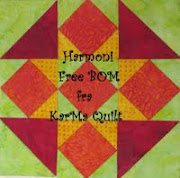
Sprewling across a boulder-strewn plateau, Golconda (Shepherd’s Hill) fort was the citadel of the Qutb Shahi dynasty, which ruled the Hyderabad region from 1507 to 1687. The earlier 12th century mud fort that stood here was transformed beween 1518 and 1580 into a splendid fortified city of grand palaces, mosques and gardens by successive Qutb Shahi rulers. Golconda Fort was also famous for its great hoard of diamonds, mined nearby, which include the celebrated Kohinoor diamond, now part of the British Crown juwels. The colossal ruins of Golconda cover an area of 40 sq km.
Åbent 10-18 – entre Indians Rs 5/ Foreigners: RS 150. Selvom det meste af dette 16-århndrede fort dateres fra Qutb Shah Konger, er det oprindelige mudderfort dateret tilbage til de tidligere herskere af Yadava og Kakatiyas. Golconda var hovedstad i den uafhængige stat Telangana i næsten 80 år, da Sultan Quli Qutb Shah forlod fortet i 1590 og flyttede til den nye by Hyderabad. I 17. århundrede blev Mughal hære fra Delhi sendt til kongedømmet Golconda for at kræve betaling af ”tribute”
Abul Hasan, den sidste Qutb Shani konge, holdt stand i 8 måneder mod Emperor Aurangzeb’s massive hær – det er let at se, hvordan Mughal hæren næsten tabte - Egentlig vandt de kun ved bestikkelse.
Den er bygget på en 120 m høj granithøj og omgivet af crenelated mure, bygget af store masonry blokke. Uden for midten endnu en mur med en diameter på 11 mtr. Og endnu en mur der udenfor. De massive porte havde spyd for at imødegå krigselefanter. Området mellem de 2 yderste mure var i datiden beboet af sigøjnere - dengang kaldet Gipsy Hell - iflg. vores guide nu kaldet Richies' hell.
Overlevelse i fortet var afhængig af vand og lyd. En serie glaserede jordledninger gav vand, mens akkustikken (loft udhugget som diamant slibning) garanterede at enhver nok så lav ville ekko igennem komplexet. Vidende guides ved indgangen vil forlange Rs. 750 for 3 km / 1½ times tur (og vores var pengene værd). Turen er udmærket træning, idet trinene op er udhugget i forskellig højde og bredde :-)
Guidebog sælges for Rs. 20,- - kl. 18.30 sound og Light show for Rs 50,00.
Golconda Fort
This great fortress is protected by three formidable lines of defence. The first, an outer fortification made of enormous blocks of granite, encircles the citadel and its entire township.
The middle wall surround the base of the hill, while the innermost one follows the contours of the highest ridge. Visitors enter though the Fatch Darweza (Victory Gate), on the east side, which has a Hindi deity carved above its arch. Hugh iron spikes are studded into the gate to prevent it from being stormed by elephant cavalries. From the Fatch Darwaza, the road curves past the Archacological Museum (the old Treasury) and through the bazaar, once a famous centre for cutting and polishing diamonds. Beyond are the two massive arches of the Habshi Kaman Gate, with rooms on top. These used to house a drummers’ gallery and the sultans’ Abyssinian guards. This gae leads to the middle fortification wall.
To its north is the austere, domed Jami Masjid, built in 1518 by Sultan Quli Qutb Shah, the founder of the dynasty. He was murderd here while at prayer by his son Jamshed in 1543. Beyond is the ceremonial arch, the Bala Hisar Gate, decorated with various Hindu motifs including yalis (fantastic leonine beasts). This is the entrance to the inner citadel, known as the Bala Hisar Complex where the royal palaces, assembly halls, work shops and an armoury are located. North of the Bala Hisar is a walled enclosure, begun in 1652 and planned as an extension to the inner fort. Within it is Hathion ka Jhaad (Elephant tree), an extraordinary 700-year old Baobab tree (Adansonia Digitata), SAID TO HAVE BEEN BROUGHT TO Golconda by the sultans’ Abyssinian guards.
The large-domed Grand Portico behind the Bala Hisar Gate is a good place to test the remarable acoustics that were an important feature of the forest of the Grand Portico are the ruins of the Qutb Shahi palaces. The most impressive of these is Rani Mahal, a vaulted hall on a raised terrace, decorated with lovely floral arabesques. Hollows in these carvings were once inlaid with Golconda’s famous diamonds and other precious stons. To the west of the Rani Mahal, a steep flight of 200 steps winds past royal baths, granaries, treasuries, water tanks and the remains of gardens, to the summit of the hill. Traces of the elaborate water supply system which carried water to the top of the citadel ar visible along the route.
Just below the summit is a graceful mosque built by Sultan Ibrahim Qutb Shah, the third sultan, and the ancient Hindu Mahakali Temple built into a cave.
At the summit of the hill is the three-storeyed Durbar Hall (Throne Room), with a rofftop pavilion. From here there are wonderful views of the entire fort and its surroundings, which include two pretty structures on hillocks Taramati’s Pavilion and Premamati’s Mosque. These ar named after two dancers who were royal favourites, and said to be so lightfooted that they could dance all the way from the pavilion to the Bala Hisar on the tightrope-
Standing outside the fort, east of the Fatch Darwaza, is the Nau Mahal (Nine Palaces), where the Nozams of Hyderabad held court whenever they came to Golconda.
 tidligt søndag morgen startede jeg bilen og kørte først til Lille Heddinge efter Birthe - og derefter til Store-Heddinge efter Vibeke
tidligt søndag morgen startede jeg bilen og kørte først til Lille Heddinge efter Birthe - og derefter til Store-Heddinge efter Vibeke  - og så gik turen ellers mod Grevinge, hvor der var inviteret til "rokke"træf i OLG markedet. Hanne Helboes mand garn-mand Søren havde dækket et stort kaffebord - og der var dejlig kaffe, æblekage og chokolader, da vi ankom.
- og så gik turen ellers mod Grevinge, hvor der var inviteret til "rokke"træf i OLG markedet. Hanne Helboes mand garn-mand Søren havde dækket et stort kaffebord - og der var dejlig kaffe, æblekage og chokolader, da vi ankom. på billedet til venstre ses Hanne sammen med Bente fra Rokken.dk, som modtog mine 5 huer og et par sokker til varmestuer.
på billedet til venstre ses Hanne sammen med Bente fra Rokken.dk, som modtog mine 5 huer og et par sokker til varmestuer. garn fra Mayflower, jeg har læse om - så der kom lige 2 nøgler af nogle fantastiske farver i kurven til noget Lana Grossa bomuld/uld og andre strømpegarner. Perlegarn havde han - og variegated maskinquiltetråde - og så kom jeg også til at købe et lille sæt knit-picks, str. 4, 5 og 6 - samt extra ender i 3.
garn fra Mayflower, jeg har læse om - så der kom lige 2 nøgler af nogle fantastiske farver i kurven til noget Lana Grossa bomuld/uld og andre strømpegarner. Perlegarn havde han - og variegated maskinquiltetråde - og så kom jeg også til at købe et lille sæt knit-picks, str. 4, 5 og 6 - samt extra ender i 3. garn fra Mayflower, jeg har læse om - så der kom lige 2 nøgler af nogle fantastiske farver i kurven til noget Lana Grossa bomuld/uld og andre strømpegarner. Perlegarn havde han - og variegated maskinquiltetråde - og så kom jeg også til at købe et lille sæt knit-picks, str. 4, 5 og 6 - samt extra ender i 3.
garn fra Mayflower, jeg har læse om - så der kom lige 2 nøgler af nogle fantastiske farver i kurven til noget Lana Grossa bomuld/uld og andre strømpegarner. Perlegarn havde han - og variegated maskinquiltetråde - og så kom jeg også til at købe et lille sæt knit-picks, str. 4, 5 og 6 - samt extra ender i 3.
















